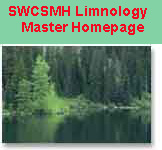Disclaimer & Copyright Notices; Optimized for the MS Internet Explorer
(Butterflies and Moths)
Soil & Water Conservation Society of Metro Halifax (SWCSMH)
![[Img-butterfly-compliments of CWF]](../butterfly_cwf.jpg)
Updated: October 09, 2013 
Contents:
- Superphylum Arthropoda
- (jointed-legged metazoan animals [Gr, arthron = joint; pous = foot])
- Phylum Entoma
- Subphylum Uniramia
- (L, unus = one; ramus = branch, referring to the unbranched nature of the appendages)
- Superclass Hexapoda
- (Gr, hex = six, pous = foot)
- Class Insecta
- (L, insectum meaning cut into sections)
- Subclass Ptilota
- Infraclass Neopterygota
Introduction
Lepidoptera (butterflies and moths) are
closely related to Trichoptera, having diverged from the Trichoptera
probably in the early Mesozoic. They belong to the infraclass Neoptera,
division Endopterygota. The larvae of only one family of moths, the
Pyralidae, have become truly aquatic.
Life History
Lepidopterans are holometabolous and have 1
to 3 generations per year. Larvae of most species go through 4 or 5
instars before pupating underwater in silken cocoons spun inside either
the larval case or the oval pupal case. Adults live for at most 2
weeks. The females of some species are larger than the males.
Habitat and Distribution
(Williams & Feltmate, 1992)
| Family | Habitat |
| Pyralidae | lakes & ponds, on aquatic macrophytes
(submerged & floating); emergent vegetation; rapid streams &
rivers, on cobbles or bedrock; bog pools- includes both free-living
forms & leaf miners/stem borers |
| Nepticulidae | lakes & ponds, on aquatic macrophytes especially in emergent zone- primarily leaf miners & stem borers |
| Cosmopterigidae | lakes & ponds, on aquatic
macrophytes especially in emergent zone; often in mosses, lichens &
algae at margins- primarily stem borers & leaf miners, with some
free-living forms |
| Noctuidae | lakes & ponds, on floating and emergent macrophytes- generally leaf miners/stem borers, with some free-living forms |
| Tortricidae | lakes & ponds, on floating & emergent macrophytes- leaf miners & stem borers |
Feeding
Like their terrestrial counterparts, aquatic
caterpillars are strictly herbivorous. The lentic species are leaf
miners, shredders, or stem borers. Some lotic species have mandibles
specialized for scraping periphyton from stones and have been reported
to compete with purse-case-making caddisfly larvae for algae. As
adults, many aquatic moths are known to feed on plant nectar an will
drink water.
Indicator value
Lepidoptera (butterflies and moths) are
closely related to Trichoptera, having diverged from the Trichoptera
probably in the early Mesozoic. Like their terrestrial counterparts,
aquatic caterpillars are strictly herbivorous.
One species, Petrophila jaliscalis,
is considered an indicator of eutrophic conditions; it can tolerate low
oxygen conditions, moderately high temperatures, reduced water flows
and enrichment (Mackie, G.L. 1998. Applied Aquatic Ecosystem Concepts.
University of Guelph Custom Coursepack. 12 chapters.).
References and web URLs:
- Hutchinson, G.E. 1993. A Treatise on Limnology. Vol. IV, The Zoobenthos. Ed. Y.H. Edmondson. John Wiley & Sons, Inc. Xx, 944pp.
- Narf, R. 1997. Midges, bugs, whirligigs and others: The
distribution of insects in Lake "U-Name-It". Lakeline. N. Am. Lake
Manage. Soc. 16-17, 57-62.
- Peckarsky, B.L., P.R. Fraissinet, M.A. Penton, and D.J. Conklin,
Jr. 1990. Freshwater Macroinvertebrates of Northeastern North America.
Cornell Univ. Press. xii, 442pp.
- Wetzel, R.G. 1983. Limnology. 2nd ed. Saunders College Publishing. Xii, 767pp, R81, I10.
- Williams, D.D., and Feltmate, B.W. 1992. Aquatic Insects. CAB International. ISBN: 0-85198-782-6. xiii, 358p.
- Mandaville, S.M. 1999.
Bioassessment of Freshwaters Using Benthic Macroinvertebrates-A Primer.
First Ed. Project E-1, Soil & Water Conservation Society of Metro
Halifax. viii, Chapters I-XXVII, Appendices A-D. 244p.
- For the entire Report, download all the files in the subdirectory, Primer1
- Chapter VIII: Order Lepidoptera (butterflies and moths)
- Tree of Life
- New York Department State of Environmental Conservation


We salute the Chebucto Community Net (CCN) of Halifax, Nova Scotia, Canada for hosting our web site, and we applaud its volunteers for their devotion in making `CCN' the best community net in the world
![[Img-butterfly-compliments of CWF]](../butterfly_cwf.jpg)
![[Img-butterfly-compliments of CWF]](../butterfly_cwf.jpg)